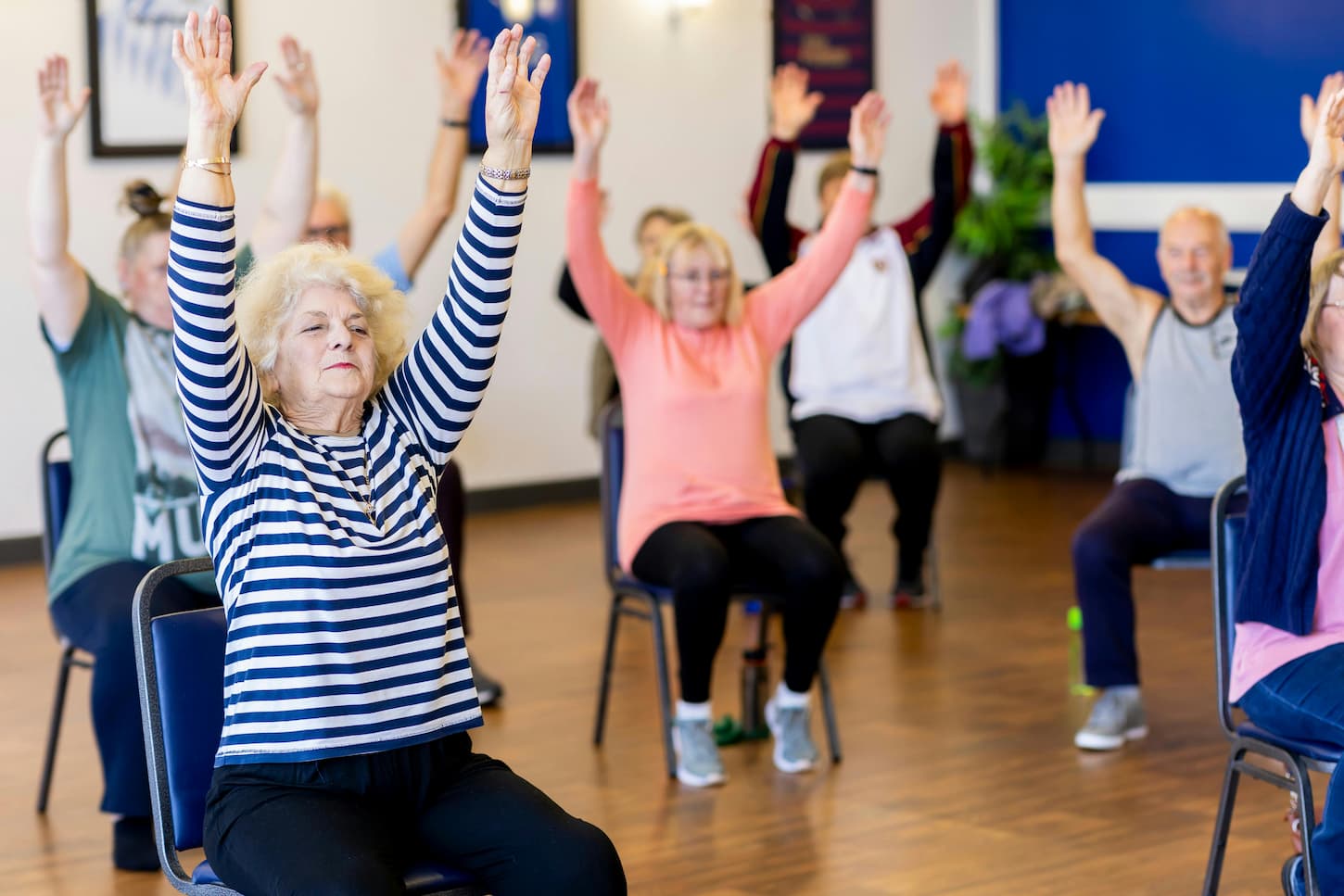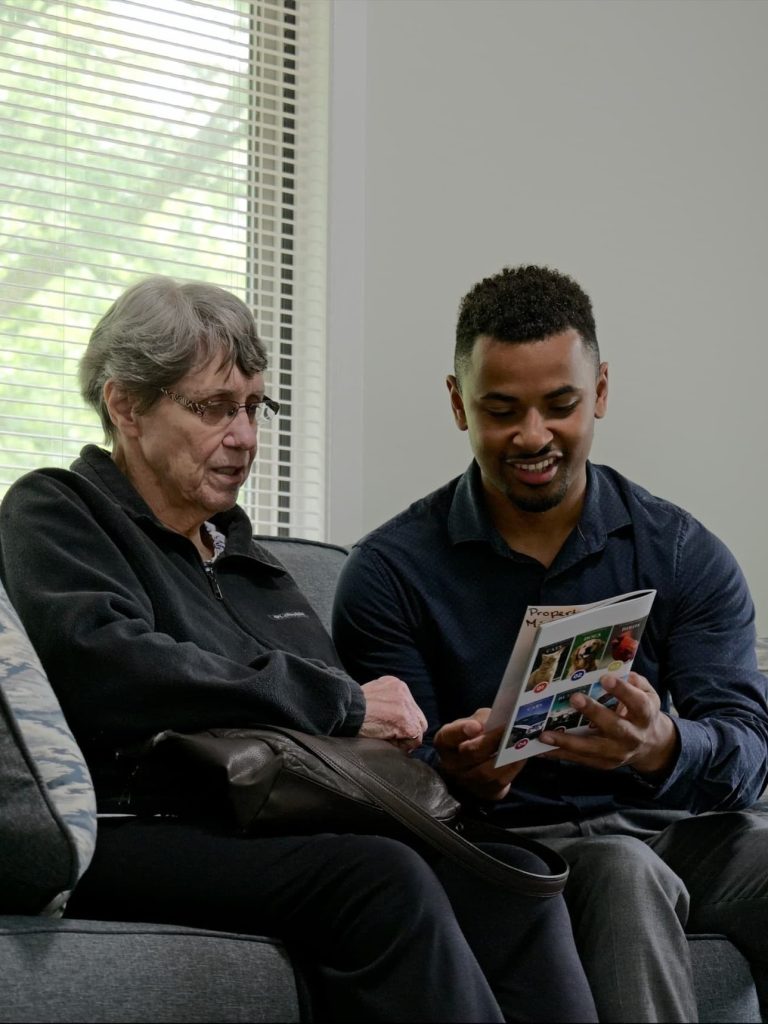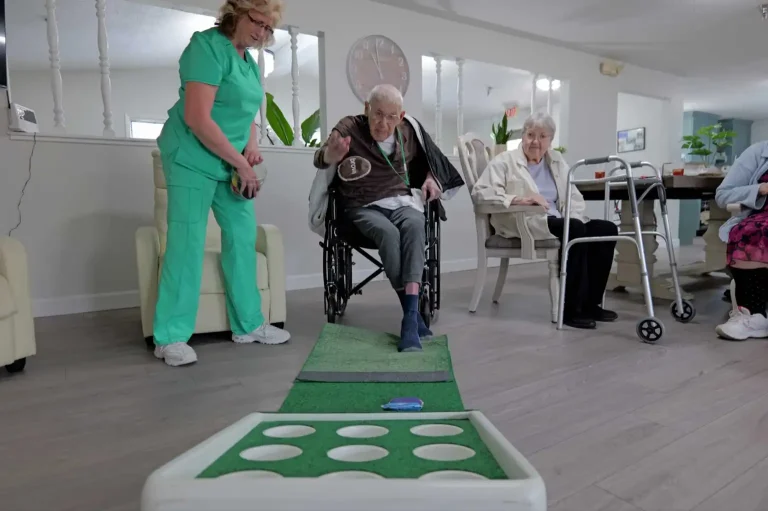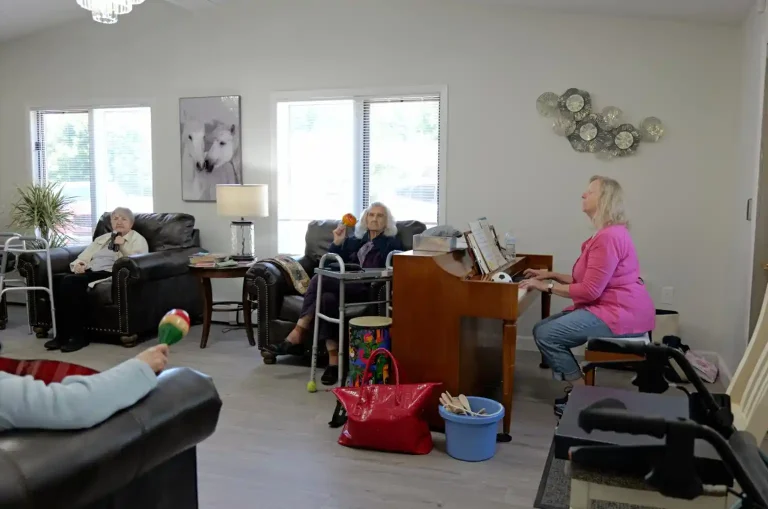Been Searching for Assisted Living Near Me?

Navigating the world of assisted living can feel overwhelming, especially when seeking the best options for your loved ones, including understanding community amenities and personal care services.
This article clarifies what assisted living truly entails and why it could be an ideal choice for seniors, offering insights into residential care and long-term care benefits.
From personalized care, including medication management and tailored care, to community engagement and support for daily living, we explore the key benefits and what to consider when choosing a community.
Additionally, we provide practical steps for beginning your search in the Green Bay area, including exploring financial assistance options and understanding eligibility criteria.
Key Takeaways:
Assisted living offers personalized care, socialization, safety, and assistance with daily tasks for seniors.The location, cost structures, community amenities, staff qualifications, and reviews are important factors to consider when choosing an assisted living community.Start your search by asking for recommendations, researching online, scheduling tours, and considering your loved one’s needs and preferences.
What is Assisted Living?
Assisted living is a form of residential care designed for seniors who need assistance with daily living activities and personal care, yet desire to maintain a level of independence. These communities, often referred to as ALFs (Assisted Living Facilities), provide tailored care to meet the diverse needs of residents, including medication management, meal preparation, and engaging in social activities like art classes and holiday parties. Unlike nursing homes, assisted living communities focus on enhancing the quality of life while ensuring safety and well-being, making them an ideal choice for aging individuals seeking both personal care and a supportive community environment, with activity opportunities to combat loneliness and depression.
Why Consider Assisted Living for Seniors?
Considering assisted living for seniors is an important decision that can significantly improve their quality of life, offering a range of benefits tailored to their unique needs. These communities provide personalized care and support, promoting independence while ensuring that seniors have access to necessary assistance with daily living activities. Moreover, they create a vibrant community environment, helping to mitigate loneliness and depression through socialization and engaging activities, including fitness centers and barbershops, while also addressing safety concerns with 24/7 staff and emergency assistance.
Personalized Care and Support
Personalized care and support in assisted living communities are crucial for addressing the unique needs of seniors, enabling them to live comfortably and securely.
Such individualized attention allows residents to thrive in an environment tailored to their personal health requirements and lifestyle preferences. Facilities often evaluate each senior’s physical, emotional, and social needs to develop a personalized care plan that reflects their unique circumstances, ensuring comprehensive care coverage and consideration of mobility challenges.
- This plan may encompass various services, including:
- Regular medication management to ensure proper dosages and timings, minimizing risks of complications.
- Assistance with daily activities such as bathing, dressing, and eating, thereby enhancing quality of life.
- Frequent health assessments conducted by qualified healthcare professionals who monitor overall well-being.
The collective efforts of caregivers, nurses, and allied health staff foster a sense of community and security, helping seniors maintain independence while receiving necessary support.
Socialization and Community
Socialization and community culture are essential aspects of assisted living, as they significantly contribute to the overall well-being of seniors and aging veterans.
Assisted living facilities are designed to foster resident engagement through a variety of social activities, including art classes, holiday parties, and fitness centers, helping to create a vibrant community culture that combats loneliness and promotes mental health, providing relief from depression and Alzheimer’s disease symptoms.
These engaging social activities not only provide opportunities for residents to connect, but they also play a pivotal role in fostering friendships that can last a lifetime, enhancing the community environment. When seniors participate in group outings, game nights, or gardening clubs, they often find a sense of belonging that enhances their quality of life.
Engaging in these programs can:
- Enhance emotional well-being by reducing stress and anxiety.
- Encourage cognitive activities, which can play a role in preventing memory loss.
- Build a supportive network that helps ease the transition to assisted living.
As community engagement becomes a focal point in care, it highlights the importance of creating a lively, interactive space where every resident feels valued and connected. Ultimately, the goal is to ensure that individuals not only live, but thrive.
Safety and Security
Safety and security are paramount considerations in assisted living communities, providing peace of mind for both residents and their families. With trained 24/7 staff available to assist with emergencies and supportive services in place, these facilities address common safety concerns associated with aging, ensuring that seniors can live independently while remaining safe and secure.
In these communities, numerous safety features are integrated to support the well-being of each resident, including apartment repairs and maintenance staff. Emergency response systems are among the top priorities, equipped with pull cords or wearable alarms that ensure assistance is just a button away in case of falls or sudden medical issues. Staff undergo rigorous training programs focusing on emergency protocols, including fire safety, evacuations, and first aid.
- Regular drills are conducted to maintain preparedness, including fire safety and medical emergency protocols.
- Each staff member is trained to recognize signs of distress or medical emergencies.
- Medical response teams are easily accessible at all hours.
By implementing these necessary measures, communities not only enhance safety but also foster an environment where residents can thrive without constant worry.
Assistance with Daily Tasks
Assistance with daily tasks in assisted living communities plays a vital role in enhancing the quality of life for seniors. These facilities offer support for personal care tasks such as meal preparation, housekeeping services, and transportation services, allowing residents to focus on enjoying their lives rather than struggling with everyday chores, with assistance tailored to personal health requirements.
Plus the mentioned services, assisted living facilities provide a range of other daily assistance options that can greatly enhance the daily lives of older adults. For instance, they often help with medication management, ensuring that residents take their prescriptions on time, which is crucial for maintaining health, addressing the needs of those with Alzheimer’s disease or similar conditions. Social activities are also organized, promoting interaction and engagement among residents.
- Personal Care: Support with bathing, grooming, and dressing.
- Housekeeping: Regular cleaning, laundry, and maintenance.
- Transportation: Scheduled outings for social events, shopping, or medical appointments.
This comprehensive approach to care enables seniors to maintain their independence while receiving the necessary support, ultimately creating a balanced environment that fosters fulfillment and joy in their daily lives.
What to Look for in an Assisted Living Community?
When searching for an assisted living community, it’s essential to consider several key factors that contribute to a positive living experience for seniors. A thorough evaluation should include the community’s location, cost structures, available amenities and services, staff qualifications, and overall community environment, ensuring that it aligns with your loved one’s needs and preferences.
Location
The location of an assisted living community is a crucial aspect to consider, as it impacts not only accessibility for family visits but also the overall community environment for seniors.
An ideal location would be in a safe neighborhood close to healthcare facilities, shopping areas, and recreational opportunities, providing residents with easy access to essential services, supporting independent living. This accessibility encourages regular outings, contributing significantly to their well-being and social engagement. Residents appreciate being within a short distance from grocery stores, pharmacies, and parks, which fosters a sense of independence.
- Convenience in daily activities helps seniors maintain their routines.
- Safety is enhanced when the environment is secure and supportive.
- Access to transportation options can help seniors stay connected with friends and family.
Further, a vibrant community can offer enriching activities, ensuring that seniors feel part of a larger network and have opportunities to engage in various interests.
Cost and Affordability
Understanding the cost and affordability of assisted living facilities is essential for families as they navigate their options. Cost structures can vary significantly among communities, with average costs influenced by factors like location, amenities, and care services offered, making it vital to explore financing options and financial assistance that may be available.
The average monthly costs for assisted living often range from $3,000 to $5,000, depending on the care level required and the specific region. Families should consider several potential avenues for funding this care, including exploring financial assistance and reverse mortgages.
Financial support options like those provided by Veterans Affairs, Medicaid, and Aid and Attendance:
- Medicaid
- life insurance benefits
- long-term care insurance
can help alleviate some of the financial burden. Financing options such as reverse mortgages may provide another layer of assistance, allowing homeowners to leverage their property value.
Understanding these various elements enables families and households to make informed decisions, ensuring their loved ones, including seniors, receive the care they need without compromising financial stability. Considerations such as financing options and Medicaid are key in this process.
Amenities and Services Offered in Assisted Living
The amenities and services offered by an assisted living community greatly enhance the resident experience, contributing to their overall quality of life by providing essential health services and access to memory care for those facing Alzheimer’s disease. Key community amenities may include fitness centers, barbershops, and meal preparation services, allowing seniors to enjoy a comfortable and engaging lifestyle.
In addition to these basics, assisted living communities often feature wellness programs tailored to individual health needs, encouraging active participation to maintain physical fitness and overall well-being. Activities such as yoga classes, swimming, and group exercises foster a sense of community, while also promoting physical well-being.
- Social Activities: Residents can engage in various social events, including game nights, arts and crafts, or book clubs, enhancing camaraderie and mental stimulation.
- Transportation Services: Reliable transport options help seniors attend medical appointments, social outings, and shopping trips, ensuring they stay connected with the outside world.
- Housekeeping and Maintenance: Regular cleaning services allow residents to focus on enjoyable activities without worrying about household chores.
By offering these amenities, the community helps create an environment that supports independence and enriches daily life.
Staff Qualifications and Training
Staff qualifications and training are critical components in ensuring high-quality care within assisted living communities, particularly in states like Alabama and New Hampshire, where regulations may vary. Well-trained staff, including healthcare professionals, are essential for providing the level of support required for seniors, including assistance with personal care tasks, medication management, and emergency assistance.
The impact of staff qualifications extends beyond daily tasks to encompass overall resident safety and well-being, especially for those using HCBS waivers and Home and Community-Based Services. When staff members possess the necessary certifications and undergo continual education, they are better equipped to recognize and address the unique needs of elderly individuals. This training enables them to:
- Recognize signs of distress or changes in health status
- Administer medications accurately and monitor potential side effects
- Implement safety protocols to prevent falls or accidents
In a professional setting, regular training ensures that staff stay updated on best practices, which directly correlates to improved resident satisfaction and trust in the care they receive. Investing in staff development fosters a culture of excellence, ultimately enriching the living environment for both caregivers and residents alike.
Reviews and Recommendations
Reviews and recommendations can provide valuable insights into the quality of care and community culture within assisted living facilities, helping families make informed decisions, particularly for veterans who may benefit from Veterans Affairs programs like Aid and Attendance.
Hearing from current and former residents or their families can highlight the strengths and weaknesses of a community, shedding light on factors such as staff responsiveness, healthcare services, and the variety of social activities available. To effectively gather these insights, individuals should consider a variety of sources, including online review platforms, social media groups, and personal visits to the communities in question.
Engaging with current residents during open houses or community events can also yield authentic testimonials that speak to daily life and resident engagement. Compiling a list of specific questions—such as inquiries about meal quality, resident participation rates, and available support services—will help focus discussions and dig deeper into the experiences shared.
- Visit multiple facilities.
- Talk directly with residents.
- Read both positive and negative reviews.
Ultimately, these personal stories and experiences will not only illuminate the essence of community culture but also provide essential guidance in selecting the right assisted living environment.
How to Start Your Search for Assisted Living Near Green Bay, WI?
Starting your search for assisted living near Green Bay, WI, can feel overwhelming, but breaking it down into manageable steps can ease the process. Begin by asking for recommendations from trusted sources, such as family friends or healthcare professionals, and then conduct online research to identify potential communities that match your loved one’s needs and preferences.
Ask for Recommendations
Asking for recommendations is a vital first step in your search for assisted living facilities, as trusted sources can provide invaluable insights and personal experiences.
Consider reaching out to family, friends, healthcare professionals, and even individuals like Dion G and Jennifer D, who may have knowledge of reputable communities in the Green Bay area. These individuals often have firsthand experiences or know someone who has navigated this process, making their perspectives particularly valuable.
When approaching potential recommenders, it’s helpful to prepare specific questions about what to look for in a facility, such as quality of care, resident satisfaction, and facility amenities.
- Family and friends: They can share personal experiences or observations.
- Healthcare professionals: Doctors and nurses can offer insights based on expertise and patient feedback.
- Online reviews: Websites can provide a wider array of opinions, though it’s essential to filter out biased information.
Evaluating feedback requires critical thinking; look for common themes across different sources. If multiple people mention a certain facility’s strengths or weaknesses, it may be worth investigating further to ensure a well-rounded decision.
Research Online
Conducting thorough online research is essential for families seeking assisted living options, as it provides access to a wealth of information about various communities. Utilize trusted websites and platforms to read reviews, compare services, and gather detailed information regarding amenities and costs associated with different assisted living facilities.
Families should focus on a variety of key factors when evaluating reviews and community insights. Look for:
- Customer ratings: Examine both the quantity and quality of reviews to gauge overall satisfaction.
- Response from management: Consider how facilities handle negative feedback, as this can indicate their commitment to resident care.
- Social media discussions: Engage in community forums where current residents and families share their experiences.
Employing various platforms, such as Google Reviews, Yelp, and specialized senior living directories, can provide different perspectives. This multifaceted approach ensures that families gather comprehensive insights, ultimately leading to informed decisions that best suit their loved ones’ needs.
Schedule Tours and Visits
Scheduling tours and visits to potential assisted living communities is a crucial step in the decision-making process, as it allows families to observe the community environment and get a feel for daily life within the facility.
When planning these visits, it’s essential for families to pay attention to various aspects that contribute to a welcoming atmosphere, such as the presence of memory care units for those with Alzheimer’s disease. For instance, the overall community environment can be gauged by observing the cleanliness and orderliness of common areas.
Families should also take note of the available amenities and activities, which play a vital role in ensuring residents remain engaged and happy. Interactions between staff and residents can reveal a lot about the culture of the place, so paying close attention to communication styles and staff responsiveness is important.
- Make a list of questions in advance to ensure that all concerns are addressed during the tour.
- Inquire about staff qualifications and resident-to-staff ratios, as these factors impact the quality of care.
By thoroughly preparing for these interactions, families can gather valuable insights that will aid in making a well-informed choice for their loved ones.
Consider Your Loved One’s Needs and Preferences
When searching for an assisted living community, it is essential to consider your loved one’s unique needs and preferences, as this will greatly impact their overall satisfaction and well-being.
Factors such as health conditions, desired level of social engagement, and preferred daily routines should guide your decision-making process.
Personal care is a prominent element in this evaluation, as each individual may have varying levels of independence or require assistance with daily activities.
- For example, if your loved one has mobility issues, it’s crucial to visit facilities that offer wheelchair accessibility and 24-hour support.
- Similarly, consider their social interactions; for some, a bustling environment filled with community events may enhance their happiness, while others might prefer a quieter setting that encourages close friendships.
- Think about their daily routines—if they enjoy gardening or arts and crafts, look for a community that provides specific recreational options tailored to these interests.
Taking these common considerations into account, including options for financing and Medicaid, can ensure that you select a living situation where they can thrive and enjoy their golden years.
What Questions Should You Ask During a Tour?
Asking the right questions during a tour of an assisted living community is vital for assessing whether it meets your loved one’s needs and expectations. Families should prepare to inquire about important aspects such as the levels of care provided, staff qualifications, and the types of activities and programs offered, ensuring a comprehensive understanding of the community’s services. Additionally, understanding how Home and Community-Based Services (HCBS waivers) are utilized can offer further insights into personalized care options.
What Levels of Care Do You Provide?
Understanding the levels of care provided by an assisted living facility is crucial for determining whether it can adequately meet your loved one’s needs. Facilities may offer varying levels of personalized care, from assistance with daily tasks to specialized memory care for seniors with Alzheimer’s disease or other cognitive impairments. These options often align with healthcare standards set for Assisted Living Facilities (ALFs), ensuring quality care.
These communities typically range from minimal support, where staff provides oversight and help with housekeeping, to comprehensive care tailored for those needing severe assistance.
- For residents requiring help with daily activities such as bathing, dressing, and medication management, the focus often shifts to enhancing their independence while ensuring safety.
- In contrast, memory care facilities are designed specifically for seniors battling cognitive decline, providing structured environments, engaging activities, and safe living spaces that support their unique needs.
Ultimately, the flexibility and attention to individual requirements reflect the core mission of assisted living facilities, ensuring that each person receives the right balance of independence and support.
What is the Staff-to-Resident Ratio?
Inquiring about the staff-to-resident ratio in an assisted living community can provide insight into the quality of care residents can expect to receive. A lower ratio often indicates more personalized attention and support, which can be especially beneficial for seniors requiring assistance with daily living and personal care tasks.
The impact of this ratio extends beyond mere numbers; it fundamentally shapes the daily experience of residents. A well-staffed facility can ensure that each individual receives timely support during meals, medication management, and social activities, creating a safe and engaging environment.
When evaluating care quality, consider the following aspects:
- Observe how staff members interact with residents.
- Inquire about staff training and expertise.
- Assess the frequency of one-on-one interactions.
- Ask about staff turnover rates.
These elements can all contribute to an overall sense of comfort and well-being, reinforcing the crucial role that a favorable staff-to-resident ratio plays in enhancing the quality of life for senior citizens.
What Types of Activities and Programs are Offered?
Understanding the types of activities and programs offered in an assisted living community is essential for evaluating how well it can promote resident engagement and socialization. Engaging programs are a crucial part of maintaining the well-being of the U.S. population of seniors. Facilities may provide a variety of activities, such as fitness classes, art workshops, and holiday parties, that cater to the interests and abilities of seniors.
Additionally, these engaging activities are crucial in not only enhancing the overall quality of life for residents but also fostering a sense of belonging within the community. By participating in activities such as:
- Group outings to local attractions,
- Music therapy sessions,
- Book clubs,
- Gardening projects,
- Cooking classes,
individuals can connect with peers who share similar interests, thereby encouraging social interaction and collaboration.
This communal aspect enhances not only friendships but also emotional well-being, as residents are more likely to feel valued and included in an environment that promotes active participation. Thus, the variety of activities plays a pivotal role in building a vibrant community where every resident can thrive.
How Do You Handle Medical Emergencies?
Inquiring about how an assisted living community handles medical emergencies is vital to ensure that residents receive prompt and effective care when needed. Facilities should have clear protocols in place, including trained staff available 24/7 to address emergencies and coordinate with healthcare professionals as necessary.
Understanding emergency response protocols can provide peace of mind for families and residents alike, fostering confidence in the support system available. When touring potential communities, it’s essential to observe the following:
- Response Time: Ask how quickly staff can respond to medical situations.
- Emergency Drills: Inquire about the frequency and nature of staff training on emergency procedures.
- Equipment Availability: Check for readily accessible medical equipment, such as defibrillators or first aid kits.
Staff qualifications play a crucial role in managing these emergencies. Properly trained personnel can make all the difference, ensuring residents receive timely assistance, thereby enhancing their safety and well-being in the community.
What is the Cost and What is Included?
Understanding the costs associated with assisted living and what is included in that cost is critical for families planning for their loved one’s care. Financing options, including Veterans Affairs Aid and Attendance benefits, can significantly impact affordability. Different communities may have varying pricing structures, so it’s important to clarify the average costs, what services are included, and any additional fees for specialized care or amenities.
When evaluating options, families will encounter an array of financial aspects that can profoundly impact their decision-making process.
- Cost Breakdown: The average monthly fees typically range from $3,000 to $6,000, depending on location, level of care, and services included.
- Payment Structures: Many facilities offer various payment plans, including private pay, long-term care insurance, and other financing options.
- Financial Assistance: Programs such as Medicaid and Veterans Affairs can provide essential support, helping to mitigate the burden of expenses for those who qualify.
Families should investigate these factors thoroughly, as understanding the landscape of financial aid and average costs will enable them to make informed choices about their loved one’s future.
Frequently Asked Questions
1. What is Assisted Living and why is it important to find one near me?
Understanding regional differences, such as those in Alabama and New Hampshire, can also guide your choice. Assisted Living is a type of senior living that offers assistance with daily activities such as bathing, dressing, and medication management. Finding one near you ensures convenience and accessibility for you and your loved ones.
2. How can I start my search for Assisted Living near me?
You can start by doing research online, asking for recommendations from friends and family, and visiting different communities in your area. It’s also helpful to make a list of your needs and preferences to narrow down your search.
3. What amenities and services should I look for when searching for Assisted Living near me?
Some key amenities and services to consider are 24-hour staff availability, nutritious meals, housekeeping and laundry services, social and recreational activities, and access to healthcare services. It’s important to find a community that meets your specific needs and preferences.
4. How can I determine if an Assisted Living community near me is the right fit for me or my loved one?
Visiting the community in person and asking questions is the best way to determine if it’s the right fit. You should also consider the atmosphere, cleanliness, and overall feel of the community. It’s also helpful to speak with current residents and their families to get their perspective.
5. Are there any financial assistance options for Assisted Living near me?
Exploring options like Home and Community-Based Services (HCBS waivers) and financial assistance through healthcare programs can offer additional support. There are various financial assistance options available, such as Medicare, Medicaid, and veteran’s benefits. Some communities also offer financial assistance or payment plans. It’s important to discuss your options with the community and determine what works best for your budget.
6. What can I expect during the transition to Assisted Living?
The transition to Assisted Living can be emotional and overwhelming, but it’s also a positive change for many seniors. You can expect support from the community staff in adjusting to your new home, making new friends, and participating in activities. It’s also important to involve your family in the transition process for a smoother experience.





